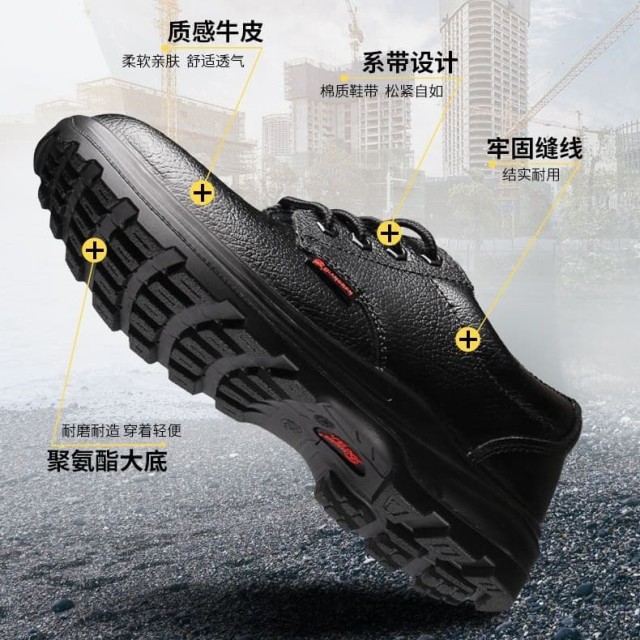Modern work boots are engineered to address two critical workplace demands: protection from hazards and sustained productivity during long shifts. The right materials don’t just meet safety standards—they actively reduce fatigue, prevent injuries, and adapt to industry-specific challenges. Here’s how data-backed material selection creates measurable improvements.
How Work Boot Materials Influence Hazard-Specific Safety
Durability vs. Weight: Balancing Long-Term Wear and Fatigue
Heavy-duty leathers offer superior abrasion resistance but can strain workers during 12-hour shifts. Recent advancements in high-density synthetic blends (e.g., thermoplastic polyurethane) provide comparable durability while reducing weight by approximately 30%. Field studies show workers wearing lighter boots report 15–20% less leg fatigue, directly correlating to fewer errors in precision tasks.
Electrical Hazard Resistance: Material Standards and Real-World Performance
For electrical workers, material choice is non-negotiable. ASTM F2413-05 mandates that EH-rated boots withstand 18,000 volts for one minute without current penetration. However, real-world performance depends on:
- Outsole composition: Carbon-rubber blends resist conductivity better than pure rubber.
- Moisture management: Wet liners increase conductivity risk; moisture-wicking membranes (e.g., Gore-Tex®) mitigate this.
OSHA’s Standard 1910.136 emphasizes that EH protection degrades with wear—reinforcing the need for regular boot inspections in high-risk environments.
Enhancing Efficiency Through Ergonomics and Material Science
Impact of Lightweight Synthetics on 12-Hour Shift Productivity
A 2021 study found warehouse workers wearing boots under 2.5 lbs completed 8% more inventory cycles per shift compared to those with traditional 3.5-lb leather boots. Key innovations:
- Fiberglass shanks: Replace steel for equivalent support at half the weight.
- Compression-molded midsoles: Distribute pressure evenly, reducing plantar strain.
How Moisture-Wicking Liners Prevent Fatigue in Humid Environments
In food processing or tropical climates, sweat accumulation increases slip risks and blisters. Boots with hygroscopic liners (e.g., Cambrelle®) pull moisture away from the skin, maintaining dryness for up to 10 hours. Trials in Gulf Coast oil rigs showed a 40% reduction in heat-related foot injuries after adopting these materials.
Industry-Specific Material Recommendations
Construction: Abrasion Resistance and Shock Absorption
- Outsoles: Nitrile rubber excels against rebar and concrete, lasting 2–3× longer than standard rubber.
- Midsoles: Polyurethane absorbs 90% of impact energy from falls under 6 feet (OSHA’s leading injury cause).
Oil & Gas: Chemical-Resistant Outsoles and Static Dissipation
- Vibram® soles: Resist hydrocarbons and acids while maintaining grip on oily surfaces.
- Carbon-fiber toe caps: Lighter than steel and non-sparking—critical for flammable environments.
Upgrade Your Safety Footwear Line with 3515
As a trusted manufacturer for distributors and bulk clients, 3515 combines OSHA-compliant materials with ergonomic designs to reduce workplace injuries and boost productivity. Let’s engineer solutions tailored to your industry’s risks. [Contact 3515] to discuss scalable production for your brand.
Data-driven material choices aren’t just about compliance—they’re the unseen foundation of a safer, more efficient workforce.
Related Products
- Wholesale Durable Safety Boots | Custom Steel Toe & Puncture-Resistant Manufacturing
- Custom Wholesale Leather Safety Boots Direct Factory Manufacturing
- Durable Steel Toe Safety Boots Wholesale & Custom Manufacturing
- Wholesale Slip-On Safety Boots Manufacturer - Custom Puncture-Proof & Steel Toe
- Wholesale Safety Footwear Manufacturer for Bulk & Custom OEM Orders
Related Articles
- Matching Men’s Work Shoe Safety Technologies to Workplace Hazards
- How Safety Standards for Steel Toe Boots Protect Workers Beyond Impact Resistance
- How Modern Steel Toe Boots Combine Safety with All-Day Comfort
- How Modern Steel Toe Boots Achieve Safety Without Sacrificing Comfort
- How Safety Work Boots Engineer Protection: Features and Standards for Targeted Hazard Mitigation




















